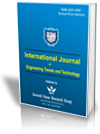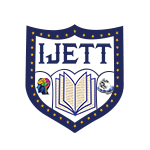Semantic Search and Generative AI for PubMed: A RAG Approach with ChromaDB and Gemini
Semantic Search and Generative AI for PubMed: A RAG Approach with ChromaDB and Gemini |
||
 |
 |
|
| © 2025 by IJETT Journal | ||
| Volume-73 Issue-10 |
||
| Year of Publication : 2025 | ||
| Author : April Rose A. Zaragosa | ||
| DOI : 10.14445/22315381/IJETT-V73I10P113 | ||
How to Cite?
April Rose A. Zaragosa,"Semantic Search and Generative AI for PubMed: A RAG Approach with ChromaDB and Gemini", International Journal of Engineering Trends and Technology, vol. 73, no. 10, pp.161-173, 2025. Crossref, https://doi.org/10.14445/22315381/IJETT-V73I10P113
Abstract
The study explores a RAG system that enhances the quality and contextual depth of information retrieval from medical literature using components such as vector databases (ChromaDB), semantic search, and Google Gemini for generative responses. The study looks at three different versions of the RAG pipeline, each designed with specific features to evaluate how well they perform in retrieving biomedical information. To get a clearer picture of their real-world effectiveness, the systems were tested by both healthcare professionals and IT specialists. The results were promising; each version showed noticeable efficiency, accuracy, and overall usability improvements. The final version achieved 90% accuracy in benchmark tests, highlighting its potential to assist healthcare stakeholders with timely, precise, and context-aware medical knowledge.
Keywords
Retrieval-Augmented Generation (RAG), Semantic Search, Generative AI, ChromaDB, PubMed, Google Gemini, Biomedical Information Retrieval, Vector Embeddings.
References
[1] Alex Thomo, PubMed Retrieval with RAG Techniques, Digital Health and Informatics Innovations for Sustainable Health Care Systems, IOS Press, vol. 316, pp. 652-653, 2024.
[CrossRef] [Google Scholar] [Publisher Link]
[2] Jiawei He et al., “Retrieval-Augmented Generation in Biomedicine: A Survey of Technologies, Datasets, and Clinical Applications,” arXiv Preprint, pp. 1-29, 2025.
[CrossRef] [Google Scholar] [Publisher Link]
[3] Aritra Kumar Lahiri, and Qinmin Vivian Hu, “AlzheimerRAG: Multimodal Retrieval Augmented Generation for PubMed Articles,” arXiv Preprint, pp. 1-17, 2024.
[CrossRef] [Google Scholar] [Publisher Link]
[4] Simeon Emanuilov, Retrieval Augmented Generation (RAG) Limitations, Meduim, 2024. [Online]. Available: https://medium.com/@simeon.emanuilov/retrieval-augmented-generation-rag-limitations-d0c641d8b627
[5] Yujie Sun et al., “AI Hallucination: Towards a Comprehensive Classification of Distorted Information in Artificial Intelligence-Generated Content,” Humanities and Social Sciences Communications, vol. 11, no. 1278, pp. 1-14, 2024.
[CrossRef] [Google Scholar] [Publisher Link]
[6] Hanjie Zhang, and Peter Kotanko, “#1506 Uremic Toxicity: Gaining Novel Insights through AI-Driven Literature Review,” Nephrology Dialysis Transplantation, vol. 39, no. Supplement-1, 2024.
[CrossRef] [Google Scholar] [Publisher Link]
[7] Bojana Bašaragin et al., “How Do You Know that? Teaching Generative Language Models to Reference Answers to Biomedical Questions,” Proceedings of the 23rd Workshop on Biomedical Natural Language Processing, Bangkok, Thailand, pp. 536-547, 2024.
[CrossRef] [Google Scholar] [Publisher Link]
[8] Jim Kutz, Leveraging ChromaDB for Vector Embeddings - A Comprehensive Guide, Airbyte, 2025. [Online]. Available: https://airbyte.com/data-engineering-resources/chroma-db-vector-embeddings
[9] Rui Yang et al., “Retrieval-Augmented Generation for Generative Artificial Intelligence in Medicine,” arXiv Preprint, pp. 1-11, 2024.
[CrossRef] [Google Scholar] [Publisher Link]
[10] Mammona Qudisa, and Muhammad Maozam Fraz, “Optimizing Article Screening and Information Extraction: A Hybrid Approach with GeminiAI and Vector Database,” 2024 4th International Conference on Digital Futures and Transformative Technologies (ICoDT2), Islamabad, Pakistan, 2024.
[CrossRef] [Google Scholar] [Publisher Link]
[11] P. Mozelius, and N. Humble, “On the Use of Generative AI for Literature Reviews: An Exploration of Tools and Techniques,” Proceedings of the 23rd European Conference on Research Methodology for Business and Management Studies, vol. 23, no. 1, pp. 161-168, 2024.
[CrossRef] [Google Scholar] [Publisher Link]
[12] Siru Liu et al., “Improving Large Language Model Applications in Biomedicine with Retrieval-Augmented Generation: A Systematic Review, Meta-Analysis, and Clinical Development Guidelines,” Journal of the American Medical Informatics Association, vol. 32, no. 4, pp. 605-615, 2025.
[CrossRef] [Google Scholar] [Publisher Link]
[13] Haowen Xu et al., “Automating Bibliometric Analysis with Sentence Transformers and Retrieval-Augmented Generation (RAG): A Pilot Study in Semantic and Contextual Search for Customized Literature Characterization for High-Impact Urban Research,” UrbanAI '24: Proceedings of the 2nd ACM SIGSPATIAL International Workshop on Advances in Urban-AI, Atlanta, GA, USA, pp. 43-49, 2024.
[CrossRef] [Google Scholar] [Publisher Link]
[14] Mohammed-Khalil Ghali et al., “Enhancing Knowledge Retrieval with In-Context Learning and Semantic Search through Generative AI,” Knowledge-Based Systems, vol. 311, pp. 1-13, 2025.
[CrossRef] [Google Scholar] [Publisher Link]
[15] Chung-Chi Huang, and Zhiyong Lu, “Discovering Biomedical Semantic Relations in PubMed Queries for Information Retrieval and Database Curation,” Database, vol. 2016, pp. 1-15, 2016.
[CrossRef] [Google Scholar] [Publisher Link]
[16] Sardar Mudassar Ali Khan, Iterative Model Used in Software Development, ResearchGate, 2023. [Online]. Available: https://www.researchgate.net/publication/371902841_Iterative_Model_Used_in_Software_Development

